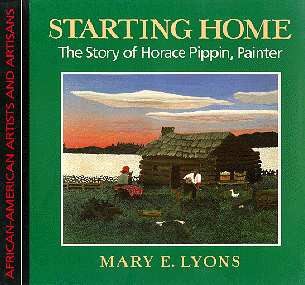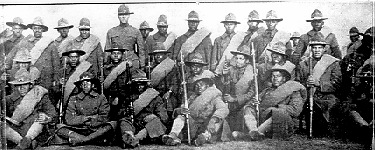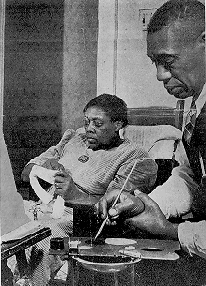
Starting Home:
The Story of Horace Pippin, Painter
(Scribner, 1993 ISBN 0-684-19534-8)
Illustration on jacket: "Cabin in the Cotton III," by Horace Pippin, Collection of Mr. Roy R.
Neuberger.
During World War I, African-American artist Horace Pippin was a member of the 369th Army Regiment. Called "Hell Fighters" by the French allies, these were the first African-American soldiers to fight overseas for the United States.
A Review
Hazel Rochman (Booklist, Nov. 15, 1993 (Vol. 90, No. 6))
. . . . Lyons' sensitive commentary will draw middle-grade readers to look
closely at the paintings and photographs that are reproduced in splendid color
on nearly every page. Horace Pippin was a self-taught painter whose work
reflects his personal story. Haunted by his experience as a soldier in World War
I, he painted scenes from the trenches years after he returned. "I can never
forget suffering, and I will never forget sunset," he wrote, and Lyons shows
that his lonely feelings were also expressed in pictures set close to home. The
paintings are haunting, and Lyons speaks about them with warm appreciation. The
captions tell where each picture is on display today. Category: Middle Readers.
1993, Scribner, $15.95. Gr. 5-7.
Read another review.


 Though
Horace's wound healed, he could not lift his right hand above shoulder level. In this picture he supports his weak right hand with the stronger left one.
Though
Horace's wound healed, he could not lift his right hand above shoulder level. In this picture he supports his weak right hand with the stronger left one.